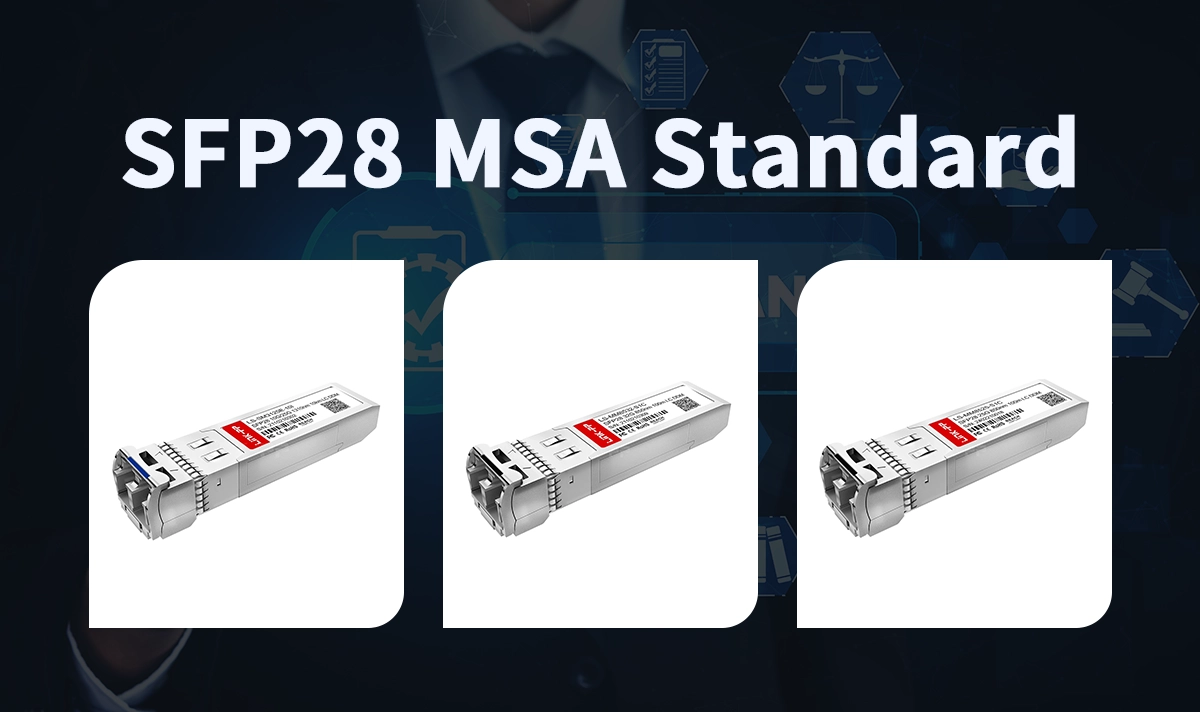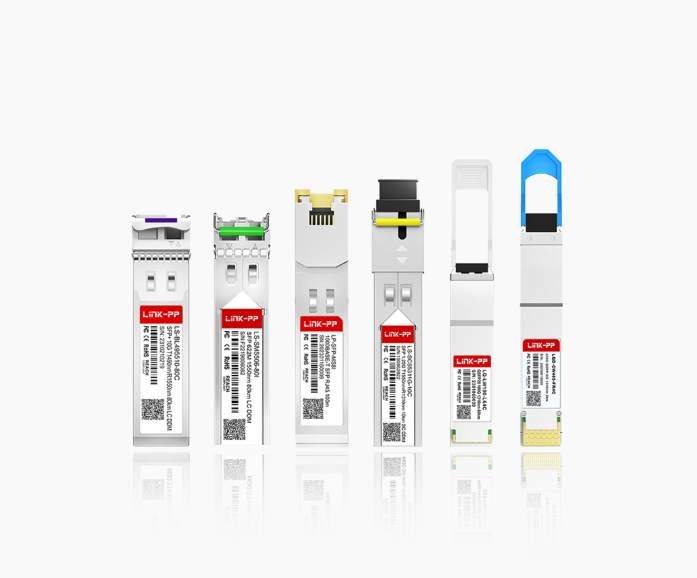
1. Introduction
The SFP28 (Small Form-factor Pluggable 28) is the industry-standard form factor for single-lane 25 Gigabit Ethernet (25GbE) connections used in modern data centers, telecom networks, and industrial systems.
Behind its widespread adoption is the SFP28 MSA (Multi-Source Agreement) — an open industry specification that defines mechanical, electrical, and management parameters to ensure interoperability between modules and equipment from different vendors.
This article explains the background and purpose of the SFP28 MSA standard, its relationship with IEEE Ethernet specifications, and how it benefits designers, integrators, and network operators.
2. What Is an MSA and Why It Matters
An MSA (Multi-Source Agreement) is a cooperative specification created by multiple manufacturers to ensure product compatibility across vendors.
While IEEE standards define protocol and signaling (for example, Ethernet data rates and encoding methods), MSAs focus on mechanical design, pin assignments, and electrical interfaces.
For optical transceivers like SFP28, the MSA defines:
Physical dimensions and latch mechanisms
Electrical pin functions and signal characteristics
Digital diagnostic monitoring (DDM/DOM)
Thermal and power specifications
Host and module communication protocols (via I²C interface)
Thanks to the MSA, SFP28 modules from different manufacturers can be safely interchanged, ensuring cross-vendor interoperability and reducing integration complexity.
3. Core Scope of the SFP28 MSA
The SFP28 MSA, based primarily on the SFF-8402 and related SFF-8431 documents, specifies the following key areas:
Category | Description |
|---|---|
Form Factor | Same size as SFP and SFP+ (56.5 mm × 13.4 mm × 8.5 mm), allowing drop-in mechanical compatibility. |
Electrical Interface | Supports up to 28 Gbps per lane; compliant with high-speed signal integrity requirements. |
Management Interface | Based on I²C (2-wire serial bus); supports DOM for temperature, voltage, and optical power. |
Media Support | Compatible with fiber (LC duplex) or copper (DAC/AOC) connections. |
Power and Thermal | Optimized for higher bandwidth with efficient power consumption (typically ≤ 1.5 W). |
These parameters make SFP28 an evolution of SFP+ — capable of handling 2.5× the data rate without changing the physical footprint.
4. Relationship with IEEE Standards
While the SFP28 MSA defines form and interface, the IEEE 802.3by standard defines how 25 GbE signals are transmitted through fiber or copper.
Standard | Defines | Examples |
|---|---|---|
IEEE 802.3by | 25G Ethernet PHY and link protocols | 25GBASE-SR, 25GBASE-LR |
SFF-8402 | SFP28 mechanical/electrical specifications | Module shape, pinouts |
SFF-8431 | Signal integrity and electrical characteristics | High-speed lane specs |
Digital diagnostic monitoring | DOM/DDM registers |
Together, these ensure a fully defined, interoperable ecosystem for 25 GbE links.
5. Compatibility and Upgrade Benefits
SFP28 modules are backward-compatible with SFP+ ports in many systems (at 10G speeds), making migration from 10G to 25G straightforward for data center and edge networks.
Key advantages:
Interoperability: Mix-and-match modules and switches from multiple brands.
Scalability: Upgrade existing SFP+ infrastructure to 25G without changing cages or connectors.
Flexibility: Available in copper DAC, AOC, and optical versions for different link distances.
Reliability: Built-in DOM/diagnostic monitoring enhances network health visibility.
6. Importance for System Designers
For equipment manufacturers and integrators, SFP28 MSA compliance offers:
Design predictability — consistent dimensions, thermal envelopes, and host interface design rules.
Testing efficiency — standardized electrical and optical parameters reduce QA cycles.
Vendor flexibility — second-source availability ensures component supply stability.
Long-term scalability — seamless path from 10G to 25G and beyond (50G/100G via QSFP family).
These benefits directly impact product reliability, lifecycle management, and interoperability certifications.
7. LINK-PP and MSA-Compliant SFP28 Modules
LINK-PP provides a wide range of SFP and SFP28 transceiver modules, cages, and magnetic connectors fully compliant with MSA and IEEE standards.
👉 Explore LINK-PP’s product range:
LINK-PP 25G SFP28 Transceivers
LINK-PP SFP28 modules feature:
Compliance with SFF-8402 / SFF-8431 and IEEE 802.3by (25GBASE-SR/LR)
Industrial temperature options for harsh environments
Low-power and low-latency design, ideal for data center and telecom networks
Full Digital Diagnostic Monitoring (DDM) capability
These MSA-compliant modules ensure reliable interoperability across diverse switch and router platforms.
8. Summary
The SFP28 MSA provides the physical and electrical foundation enabling 25 Gbps Ethernet in compact, hot-pluggable form factors.
By defining consistent mechanical and electrical interfaces, it guarantees interoperability, simplifies upgrades, and reduces integration risk across vendors.
For businesses deploying 25G networks — from hyperscale data centers to industrial automation — choosing MSA-compliant SFP28 modules, like those from LINK-PP, ensures performance, compatibility, and long-term reliability.




